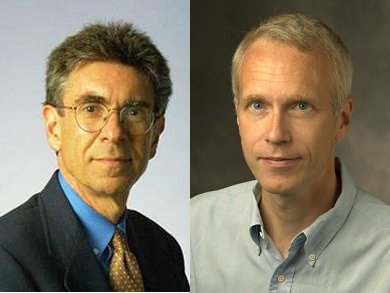I am fully back in gear (after another grueling exam) and ready to post. Yesterday, the twitter world was abuzz about the 2012 Nobel Prize in Chemistry going to two American scientists Dr. Robert J. Lefkowitz, a professor at Duke University Medical Center in Durham, N.C., and Dr. Brian K. Kobilka, a professor at the Stanford University School of Medicine in California.
The two scientists discovered the inner workings of G-protein-coupled- receptors (GPCR), that reside on the surfaces of cells and react to a host of hormones and neurotransmitters.
For example, when you found yourself facing a very irritable tiger, adrenaline hormones are released telling your body to run as fast as your legs can carry, but your heart needs to pump faster for your leg muscles to work. The beta adrenergic receptor (a GPCR) transmits adrenaline to your nerve cells, which tells your heart muscles to pump fast now!
Fortunately, I’ve been learning these receptors given that my current exams are mostly about anatomy, physiology, microbiology and medicine. Many pharmaceutical companies are targeting these GPCRs and about 50% of all medications now are reportedly achieved their effect through GPCRs. There is actually a nice old article (March 2011) from Chemical & Engineering News on more about these receptors.
Now, let me go back to my point on why biology is changing the landscape of chemistry especially as this blog is focusing on renewable chemicals.
Some of the controversy surrounding the award is coming from the chemistry community where there are grumbles that the science of Chemistry has been snubbed with this award seeming to focused more on medicine.
The President of American Chemical Society, Bassam Shakhashiri, discredited that notion stating that “although Lefkowitz and Kobilka are medical doctors, both new Nobel laureates have strong chemistry connections.”
“The chemistry of today is no longer the chemistry of Alfred Nobel’s time, or even of a few decades ago. Things have changed. The traditional borders between chemistry and other fields — especially biology — are blurring. The 2012 Nobel Prize in Chemistry was a fantastic development, a dramatic illustration of how chemistry has become so central to other fields of science.” – Shakhashiri
My thoughts exactly. Fine and specialty chemicals have long been using molecular sciences to synthetically manufacture in commercial quantities products such as vitamins and minerals, skin care ingredients, food/flavor/fragrance ingredients, enzymes, etc. Even traditional chemical companies such as BASF, Dow DuPont, DSM have long been involved in these businesses.
And now, renewable chemical companies — some of them with fine chemicals and pharmaceutical backgrounds — are tackling the commodity chemicals market using the science of biology and molecular engineering. The future is bright for the chemical industry as modern medicine tackles the inner workings of the body, the technology behind these are now being transferred fast for commodity chemicals production.
An example is this interesting article from the Duke Cancer Institute where researchers looking to cure tumors found a more environmentally friendly process to produce adipic acid using a series of enzymes.According to the researchers, they were able to produce adipic acid from cheap sugars just by sequencing cancer genomes.
“This is the result of a cancer researcher thinking outside the box to produce a new enzyme and create a precursor for nylon production.”




